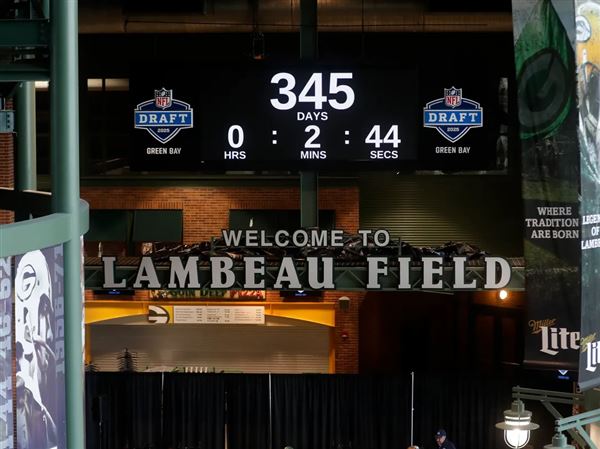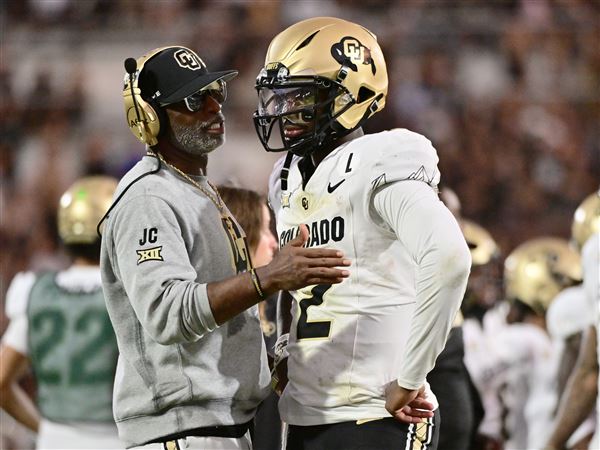SAN DIEGO -- Charlie Morton pulled the office door closed behind him.
Jim Benedict, the Pirates' minor-league pitching coordinator, sat behind his desk at the team's spring complex on this mid-February morning in Bradenton, Fla., and Morton grabbed a chair, as well. Benedict is one of those baseball lifers whose perpetually frowning mustache and seed-spitting style make him a classic Hollywood character in one sense, but all business in the real world. And this, for sure, would be all business. There were no windows, no framed pictures. The stark, white walls left nowhere for these two to hide from a conversation that, for very different reasons, neither wished to have.
Benedict clicked on his laptop to begin a video. It opened with Morton pitching in 2001, his junior year of high school in Fairfield, Conn. Benedict would pause, frame after frame, to show Morton how his body had to contort, head bobbing, back out of whack, for his right arm to follow through its delivery directly overhand.
"Look at the effort," Benedict told him. "Look how hard you have to work to take your motion that high."
Other clips from Morton's career followed, chronologically, right up to his disastrous 2010 for the Pirates, when he was the worst starting pitcher in Major League Baseball. With each, Benedict commented on how hard that delivery looked.
Morton nodded with each but kept mostly mum.
It had been Benedict's goal that morning to fully broach the concept of moving Morton's arm slot down to a three-quarters or diagonal delivery. But he was loath to go much further at the time, as any development type in baseball might be. Mess with a pitcher's delivery the wrong way, and that's two people out of jobs, not one.
More prevalent in Benedict's mind was the relationship. The two had become close since Morton's epic struggles in Pittsburgh the previous summer, and Benedict did not want to push too far.
"The trust factor is so important," Benedict said in recounting the meeting.
Morton's reason for not wanting to have the conversation was far less noble.
"You know what I'm thinking in there?" Morton recalled. "I'd spent what felt like a long, really hard time just fighting back to the point where I could be decent again. I felt like I finally got to that point, where I was OK. And now, this in that office. This could set me back."
Back from OK?
"Yeah, I know. But that's how I was thinking at the time."
And where is his standard set now that he has employed that three-quarters delivery and a dynamic new sinker to become one of baseball's most intriguing performers early this season?
"It's a lot higher than OK."
Morton is, essentially, a new pitcher at age 27, having discarded most everything about the way he had thrown a baseball all his life, as well as all the negative numbers: He has gone from 2-12 with a 7.57 ERA last year to, a cool, confident ground-ball machine who is 3-1 with a 3.52 ERA.
And that, according to all concerned, is because this pitcher who had been praised since childhood for his golden arm and natural talent was doing something wholly unnatural.
Rewind, first, to last summer ...
After Morton was demoted to Class AAA Indianapolis in May -- richly deserved, with a 1-9 record and 9.35 ERA -- he befriended pitcher Mike Crotta, best sinkerballer in the system. Morton and Crotta talked about Morton's attempts to throw sinkers to no avail. His was flat, straight and achieved little more than reduced velocity on a fastball.
Crotta showed Morton his sinker grip, and that prompted a move of his thumb from the side of the ball to underneath. The idea was to stay "more on top of the ball," as Crotta described it.
Morton tinkered with it in the minors and, upon being recalled to Pittsburgh in late August, he was free to try it again at the top level since pitching coach Joe Kerrigan had just been fired. Kerrigan wanted no part of Morton's sinker, feeling it detracted from fastball command, and he once was so angry with Morton for throwing a sinker in a game that he threatened to walk to the mound in the middle of an at-bat and pull him if he threw another.
This new sinker was ... OK. Much better than the old, but nothing special.
Now, fast-forward to Benedict's video ...
"When we stacked those clips together -- and I mean, we looked at everything, even fall league, the whole way up -- we tried to put it all together into one picture," Benedict said. "If you slow the frames down, you would see him clear his head out, try to get a high arm slot and throw downhill, mostly so he could have a 12-6 curve."
That is a curveball that goes directly downward, like the 12 and 6 on a clock. Think Bert Blyleven.
"Well, Charlie did have a great curve, but that motion isn't for everybody," Benedict said. "The dream for all of us in baseball is that No. 1 Roger Clemens-type starter, throwing downhill with power. We get a tall, lanky guy out of high school and we keep pounding that concept. Charlie was told for years he was that guy."
Morton never pitched any other way. The only time he threw three-quarters was when he dabbled as a third baseman in American Legion ball.
"There's a lot of cookie-cutter teaching that goes on. 'Your arm should be here, and that's how it is,' " Morton said. "I had other people telling me what was natural for me. And it's weird because it seems like the things at which I was talented in life, I didn't have a problem doing well. Except for baseball. So, when the Pirates said they didn't think I was pitching naturally, I thought, 'Well, maybe I'm not.' "
When Morton was demoted last year, Benedict and Ray Searage, the Pirates' pitching coach but then an assistant, began a deep-dive study into his pitching past.
"Any major-league pitcher that gets sent down, we go over what we call a paint-the-picture process," Benedict said. "What kind of high school program was he in, what kind of coaching, was he rushed, were things taught too early or too late? And you try to figure out the man. Why are you here?"
The conclusion, according to Searage: "Everything we saw went back to Charlie trying to be something he wasn't."
After several months of discussion, Benedict and Searage sought approval over the winter from general manager Neal Huntington before approaching Morton. It would not be an easy call. Morton pitched decently upon returning to Pittsburgh last year, and he shined in a brief stint in the Dominican Winter League. But the approval was granted.
Benedict and Searage had broached the difficulty of the high arm slot with Morton informally a couple of times before the video session in mid-February, and it was that day that they came completely clean.
Searage, who joined the meeting after it started, gave a long sermon about the value of throwing three-quarters. But he was just as cautious as Benedict.
"We want you to try this," Searage recalled saying. "But we're not going to push it on you."
Finally, Morton did more than nod. He was enthusiastic.
"Everything they'd told me to that point made sense. It just felt right," Morton said. "There are times you talk to a coach, and you're listening, but you're not feeling what they're saying. ... I felt this."
The pitching coaches walked with Morton from the office to one of the outfield grass of Pirate City. The sun was blaring, the morning dew still glistening, as Morton and another pitcher, Fernando Nieve, stepped onto the grass for a routine game of long-toss.
The pitchers lined up 60 feet apart. Searage and Benedict spread out, too, to have different angles.
Morton appeared hesitant, unsure of how to begin.
Searage shouted: "Hey, Chuck, just throw sidearm!"
Sidearm?
"You tell somebody who throws over top to throw sidearm, and he'll go three-quarters," Searage explained.
So, Morton threw "sidearm," and, with the first toss, they looked around at each other.
"I'm looking at Benny, looking at Ray to see if I'm doing it right," Morton said.
Searage and Benedict looked at each other, too, unseen by Morton.
"We're giving each other the holy-smokes-what-have-we-got-here eye," Searage said.
Morton tossed a few more, then stretched it longer distances.
"It had a lot of life," he said. "And as I'm backing up, it kept getting better. It was coming out easy, but it was hard."
Easy in terms of effort, Morton meant, but hard in terms of velocity. Or, as Searage described it, "The ball's coming out of his hand like a greased goose."
He approached Morton: "How's that feel?"
Morton: "Ray, this feels so easy. I don't feel anything."
Benedict chimed in: "That's how it's supposed to be. The natural feeling of pitching is easy."
Searage: "All right, keep doing it!"
Morton got a bit emotional.
"When I started seeing what the ball was doing, how easily it came out of my hand, how little effort went into it ... I embraced it right away, to be honest. That's what I was supposed to be doing all along."
Later that morning, Morton took it to a bullpen to try 20 pitches off a mound.
"They were focused just on my head and my delivery, and they didn't care where the ball went," he said. "But it still went where I wanted."
Two days later, Morton pitched a live batting practice. Veteran first baseman Lyle Overbay was first into the box. The initial offering was a sinker, which suddenly had a violent drop, in part because the grip he learned from Crotta was a far better match with a three-quarters delivery. Next was a curve, which no longer went 12-to-6 on the imaginary clock, but 2-to-8, giving it twice the deception.
Overbay stepped out and quietly spoke a few words to the coaches and players behind the cage.
Morton asked: "What are you saying?"
Overbay: "You remind me of Roy Halladay. Spitting image."
Morton: "Really?"
WEDNESDAY: The person and the potential
First Published: May 3, 2011, 8:00 a.m.















